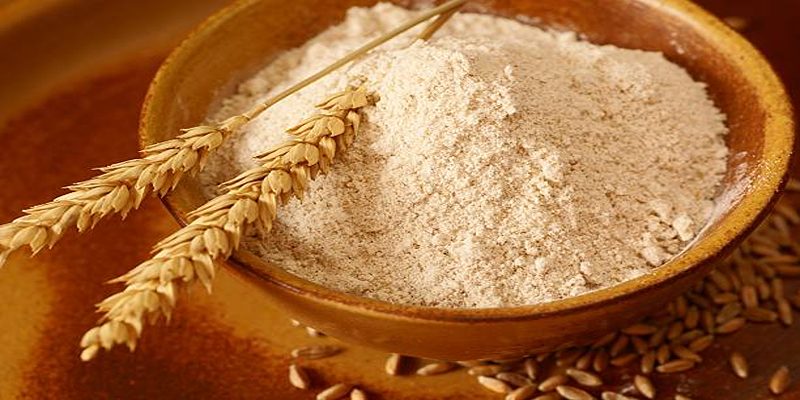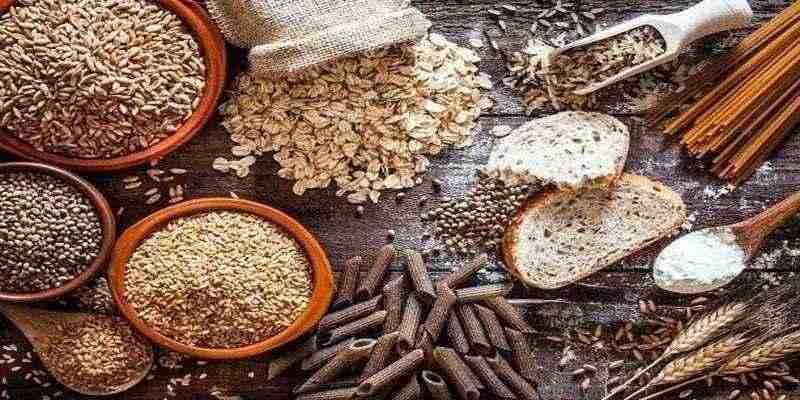Understanding Whole Wheat and Wheat Bran
Jul 09, 2024 By Nancy Miller
Whole wheat and wheat bran are two fundamental components of a well-balanced diet, often lauded for their rich nutrient profiles and myriad health benefits. Whole wheat flour is produced by grinding the entire wheat kernel, which includes the bran, germ, and endosperm. This process retains all the natural fibers and essential nutrients, making it a healthier alternative to refined white flour. On the other hand, wheat bran is the outer layer of the wheat kernel that is often removed during the refining process. It is particularly high in dietary fiber, aiding in digestion and promoting a healthy gut. Understanding the distinctions and respective health advantages of whole wheat and wheat bran can help in making informed dietary choices.
What is Whole Wheat?

Whole wheat refers to flour made by milling the entire wheat kernel, which comprises the bran, germ, and endosperm. This holistic approach ensures that all parts of the grain are included, preserving the nutrient density that makes whole wheat a nutritious choice. Rich in vitamins, minerals, and antioxidants, whole wheat flour is known for its high fiber content, which aids in digestion, helps regulate blood sugar levels, and maintains heart health.
The presence of bran in whole wheat helps in cancer prevention and weight management by providing a feeling of fullness. Consuming whole wheat as part of a balanced diet can contribute to overall well-being and reduce the risk of chronic diseases.
What is Wheat Bran?
Wheat bran is the outer layer of the wheat kernel and is typically removed during the milling process to produce refined white flour. However, this byproduct is immensely valuable due to its high dietary fiber content. Wheat bran is rich in insoluble fiber, which aids in maintaining regular bowel movements and promotes digestive health. Wheat bran is a good source of essential nutrients such as B vitamins, iron, magnesium, and antioxidants. Incorporating wheat bran into your diet can help lower cholesterol levels, reduce the risk of heart disease, and aid in weight management by providing a sense of satiety. It can be easily added to cereals, baked goods, and smoothies to enhance nutritional value and support overall health.
Nutritional Benefits of Whole Wheat:
- High in Fiber: Whole wheat is an excellent source of dietary fiber, which promotes digestive health, helps regulate blood sugar levels, and lowers the risk of heart disease.
- Rich in Essential Nutrients: Whole wheat contains B vitamins, iron, magnesium, and antioxidants that support overall well-being and contribute to a healthy immune system.
- Lowers Risk of Chronic Diseases: Consuming whole wheat as part of a balanced diet can help reduce the risk of chronic diseases such as cancer, diabetes, and heart disease.
- Aids in Weight Management: The high fiber content of whole wheat helps maintain a feeling of fullness, making it a beneficial addition to weight loss diets.
- Good for Heart Health: Whole wheat is rich in nutrients that contribute to heart health, such as fiber, magnesium, and antioxidants. It can help lower cholesterol levels and reduce the risk of heart disease.
Nutritional Benefits of Wheat Bran:
- High in Insoluble Fiber: Wheat bran is primarily composed of insoluble fiber, which helps maintain regular bowel movements and promote digestive health.
- Good Source of Essential Nutrients: Wheat bran is rich in B vitamins, iron, magnesium, and antioxidants that support overall well-being and contribute to a healthy immune system.
- Lowers Cholesterol Levels: Adding wheat bran to your diet can help lower cholesterol levels, reducing the risk of heart disease.
- Aids in Weight Management: The high fiber content in wheat bran provides a feeling of fullness, making it a beneficial addition to weight loss diets.
- Promotes Digestive Health: The presence of insoluble fiber in wheat bran supports healthy digestion and can aid in preventing constipation.
Whole Wheat vs. Refined White Flour:
While whole wheat and wheat bran each offer impressive health benefits, it is essential to understand the stark differences between whole wheat and refined white flour. Refined white flour is created by removing the bran and germ from the wheat kernel, leaving only the starchy endosperm. This process strips away most of the fiber, vitamins, and minerals, resulting in a product with reduced nutritional value.
White flour has a finer texture and longer shelf life, making it popular in baking and processed foods. However, its consumption is linked to increased blood sugar spikes and a higher risk of chronic diseases such as type 2 diabetes and obesity. In contrast, whole wheat flour retains its nutrient-rich components, making it the superior nutritional choice for a healthy diet.
How Wheat Bran Supports Digestive Health:
- Promotes Regular Bowel Movements: As a significant source of insoluble fiber, wheat bran helps maintain regular bowel movements and prevent constipation.
- Aids in Digestion: The high fiber content in wheat bran promotes healthy digestion and can alleviate symptoms of digestive disorders such as Irritable Bowel Syndrome (IBS).
- Supports Gut Health: Wheat bran is known to promote the growth of beneficial bacteria in the gut, contributing to a healthy gut microbiome.
- Reduces Risk of Colorectal Cancer: Studies have shown that dietary intake of whole grains, including wheat bran, can lower the risk of colorectal cancer.
Incorporating Whole Wheat into Your Diet:

- Replace Refined White Flour: When baking or cooking, replace refined white flour with whole wheat flour to boost the nutritional value of your meals.
- Choose Whole Wheat Products: Opt for whole wheat bread, pasta, and rice instead of their refined counterparts to increase fiber intake.
- Add Wheat Bran to Meals: Sprinkle wheat bran on top of cereal, yogurt, or salads for a nutrient boost.
- Experiment with Recipes: Use whole wheat flour in recipes that call for white flour, such as pancakes or muffins, to add more nutrients and fiber to your diet.
- Include Whole Wheat in Snacks: Swap out processed snacks for whole wheat crackers, popcorn, or pretzels to increase fiber intake and promote satiety.
Conclusion:
Whole wheat and wheat bran provide a wealth of health benefits, from enhancing digestive health and aiding in weight management to reducing the risk of chronic diseases. Integrating these nutrient-dense ingredients into your diet can bolster your overall well-being and support a healthy gut microbiome. Try experimenting with different recipes and making small adjustments to your meals to increase your whole wheat intake and enjoy its nutritional advantages. The next time you're grocery shopping or planning a meal, opt for whole wheat products over refined ones for a healthier, more nutritious choice.
-
 Oct 01, 2023
Oct 01, 2023Understanding Sciatica: Causes, Symptoms and Treatment Option
Uncover the key aspects of sciatica, a nerve condition causing discomfort in the lower back and legs. Understand its causes, symptoms, and treatment options to manage and alleviate pain effectively.
-
 Nov 11, 2023
Nov 11, 2023What is cervical cancer?
This comprehensive article provides critical insights into cervical cancer, detailing risk factors, symptoms, prevention methods, and early detection strategies to combat this life-threatening disease.
-
 Oct 26, 2023
Oct 26, 2023Understanding Shoulder Pain: Causes, Symptoms, and Treatment Options
Gain valuable insights into the causes, symptoms, and treatment options for shoulder pain. Arm yourself with the knowledge to make informed decisions about your health.
-
 Jul 31, 2024
Jul 31, 2024Best Grapeseed Oils for Healthy Hair
Discover the top grapeseed oils for shiny, healthy hair. Nourish and revitalize your locks.
